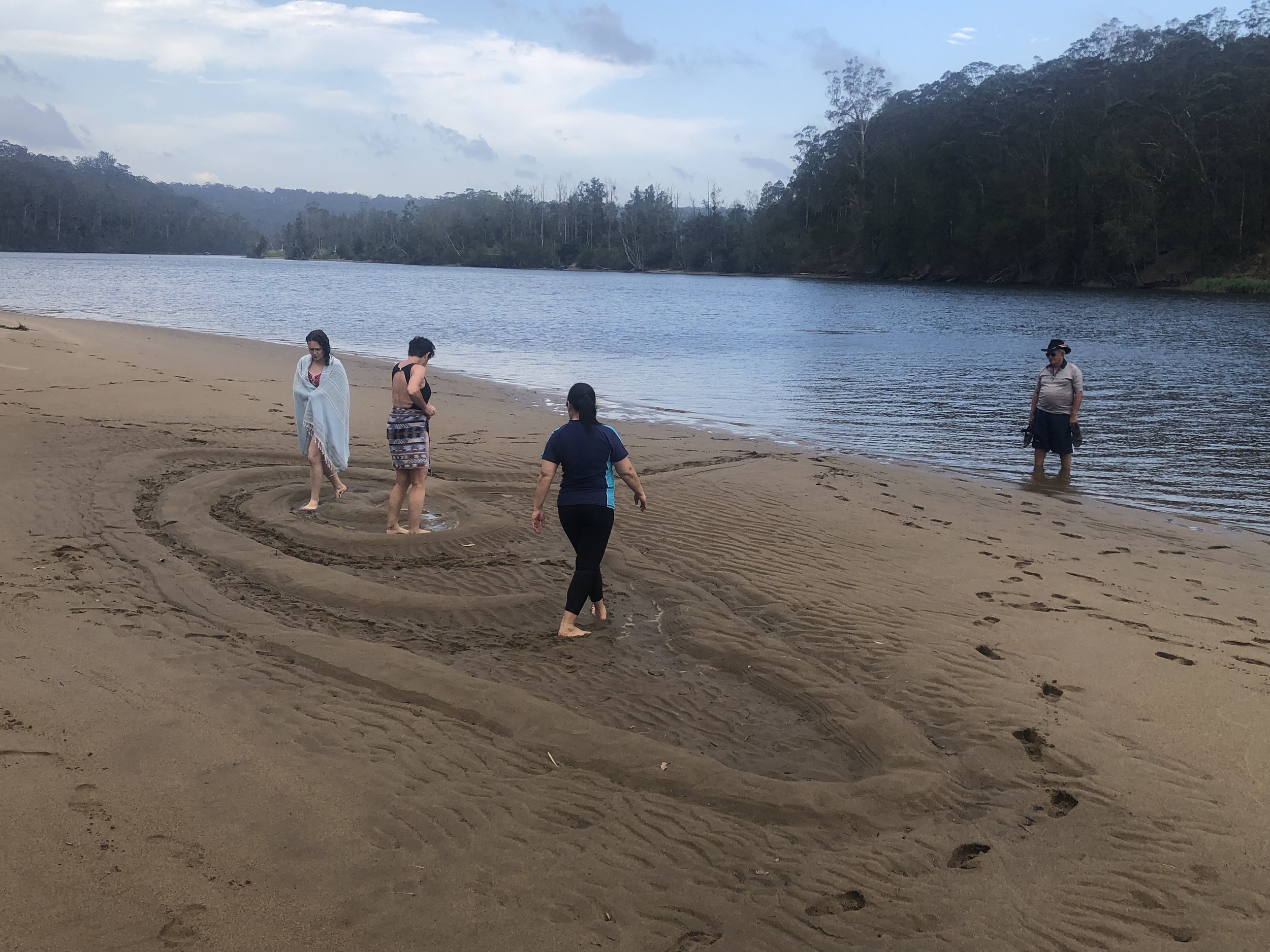EPHEMERAL WATER LABYRINTH || 2018-2019






Ephemeral Water Labyrinth
by Jude Anderson and Morwenna Schenck
What opens the way for a oneness with water?
In a climate change context where fresh drinking water is a rapidly diminishing resource, during The Pump’s first research residency we proposed that the Ephemeral Water Labyrinth might shift the tempo of our thinking to produce a wellspring of ideas for transformational change while inviting a closer affinity with water.
As a way of thinking while walking, we created an ephemeral labyrinth that drew from its connection to a local body of water – the Bangalee (Shoalhaven River). We wanted to frame a sensory and contemplative experience; one that would celebrate water’s central importance as a vital resource and allow water to shape an aesthetic.
In proposing a contemplative act, we sought a reminding or re-minding that invited a reconnection with water. Remembering is not a continual flux. But for our river labyrinth, where tidal flux affects the Bangalee’s flow and levels, it was important that its tidal action influenced the labyrinth as its water reached the labyrinth’s centre and so too our thinking.
In walking the labyrinth people would, like the water, arrive at a central point where the water was ‘held’.
We proposed our labyrinth as a way of walking from a place of unknowingness to return with ideas while letting the water play an essential role in the shaping of things. In retracing the way in, we would find a way out. In moving through, we would think through. A mindful meandering through involution/evolution.
Questions we asked:
What might be a local way of building a labyrinth and walking through a problem be as an experience?
In our Climate Change/Water Future context, how might building a labyrinth and walking it slow people down to consider their relationship with water?
How can water shape a labyrinth? (the involuntary art of nature)
Can a labyrinth lead to a wellspring?
Can our labyrinth provide a way to shape a oneness with water?
We will continue our research and develop further ephemeral labyrinth projects where the aesthetic is influenced by shifting, localised, natural systems.